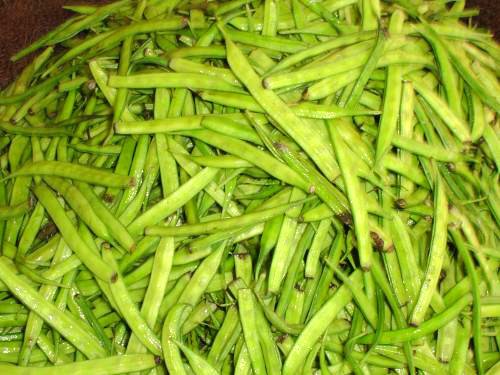Arizona’s growing bioeconomy is about to be energized by a $15 million grant from the U.S. Department of Agriculture’s National Institute of Food and Agriculture.
The grant will be used to form a University of Arizona-led center, the Sustainable Bioeconomy for Arid Regions Center, which will be a partnership among several organizations. Kimberly Ogden, director of the UA Institute for Energy Solutions and a professor in the College of Engineering, will head the center.
Colorado State University, New Mexico State University, Colorado School of Mines, Bridgestone Americas and other groups will work under UA leadership toward a shared goal of increasing bioproduct viability.
What are bioproducts?
Bioproducts are products derived from biomass. Biomass is plant matter that can be used as a fuel. An example is ethanol, an alcohol produced by the fermentation of sugars. Ethanol works in a similar fashion as regular gasoline. In fact, 97 percent of gasoline in the U.S. contains some ethanol, according to the U.S. Department of Energy.
However, gasoline is a fossil fuel. The U.S. Department of Energy classifies fossil fuels as non-renewable resources, meaning they are depleted faster than they are formed. Biomass, on the other hand, is renewable, and can be used to make biofuel.
Ethanol and other biofuels are comprised of biomass that has been converted into liquid fuel for transportation.
But biofuels are only one kind of bioproduct. There are many, ranging from bioplastics to biofoams and biocosmetics. These products are all ultimately derived from feedstocks.
What are feedstocks?
Biomass feedstocks are renewable, plant-based materials with industrial applications, according to the U.S. Department of Energy.
RELATED: UA makes sustainability competitive
The UA-led Sustainable Bioeconomy for Arid Regions Center will focus on two feedstocks in particular: guar and guayule. Both have exceptional heat and drought tolerance, making them ideal for the Arizona climate.
Guar originally comes from arid desert regions in India. The legume has a multitude of commercial applications, ranging from being used as a thickener in the food industry (in the form of guar gum) to a stabilizer in the drilling industry.
Guayule is a latex-producing plant indigenous to the Southwest and is used in the tire industry as a source of rubber.
But Dennis Ray, UA distinguished professor in the School of Plant Sciences, said he hopes to go further with these plants, as he has been studying guar and guayule for over 30 years.
“A lot of what we grow now, there’s one product,” Ray said. “What do you do with the rest of that plant?”
Meeting the full plant potential
Realizing the full potential of drought-tolerant plants would make them more effective in a number of ways. Guayule and guar leave behind a residue after they have been harvested for rubber and guar gum.
This residue is called bagasse, according to Ray.
“You can take that and make it into jet fuel, biodiesel and gasoline,” Ray said. “Some of it could be used to run the processing plants.”
Biorefineries, as they are called, may play a key role in the success of a long-term bioeconomy.
For example, petrochemicals are materials derived from the refining of petroleum. They account for 2013 revenues upwards of $800 billion in the petroleum industry, nearly equal to the income brought in from actual fuel production, according to the U.S. Department of Energy.
And yet, petrochemicals are made with a fraction of the resources. Biorefineries could operate in a similar manner.
But everything starts with feedstocks. Ray said that learning more about the plants is, therefore, of great importance.
Chemical ‘plants’
“Plants don’t have immune systems,” Ray said. “When they come across viruses and fungi, they make other chemicals to fight [them] off.”
RELATED: How ideas about gender shape medicine
The benefits of these resultant chemicals, according to Ray, vary widely, and their uses extend beyond the realm of typical industry; some chemicals may even combat disease.
However, the scope of the enterprise is not limited to guar and guayule. Ray envisions the method being applied to any crop.
“Can we find other uses, biofuels and bioproducts, from other crops?” Ray said.
Ray’s team is working to improve feedstocks, implementing plant-breeding techniques comparable to those of prehistoric humans.
There are many additional teams working with irrigation, soil fertility and other agricultural aspects, but the Sustainable Bioeconomy for Arid Regions Center seeks to do more, according to Ray.
There are plans for workshops, extension bulletins, K-12 teaching modules, outreach involving graduate students, interactions with indigenous communities and much more. The goal, Ray said, is to serve as an example of sustainability, not only in the U.S., but in arid regions around the world.
And it’s rooted right here, at the UA.
Follow the Daily Wildcat on Twitter









